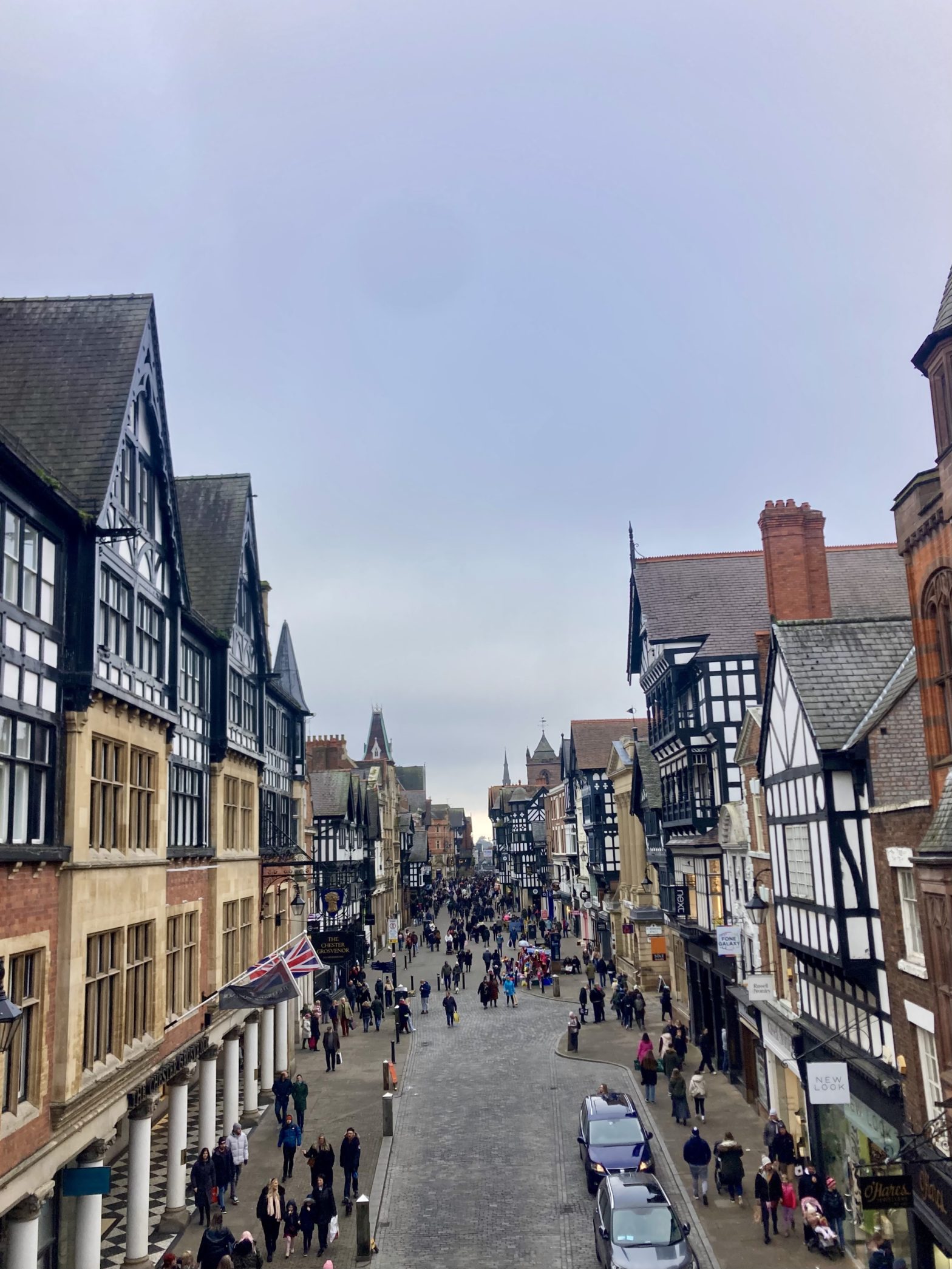The more time I spend in Liverpool, the more I realize how much there is to see and discover right here! Fellow classmates, local Liverpudlians, and other Brits are happy to suggest the best pubs, museums, parks, and must-see streets to explore in Liverpool and around the UK. I’ve started a bucket list. It expands daily so I’ve been forced to accept that I simply cannot see it all.
On Saturday, two of my flatmates and I had a chance to cross one city off the list: Chester. This cathedral city is located along the Wales/England border and dates back almost 2,000 years to the Roman Empire. We left our flat at 7:15 to catch the bus to the train station where the cheerful ticket-seller informed us that a day saver ticket for a round trip to Chester cost less than £6. A beautiful, rose-gold sunrise glinted through the smudged train window as we trundled south through a smattering of sleepy towns and quiet fields.


We were greeted in Chester by crisp morning air over fields frosted with silver and shimmering with the sun. From the station, we walked through Grosvenor Park and strolled along the River Dee.


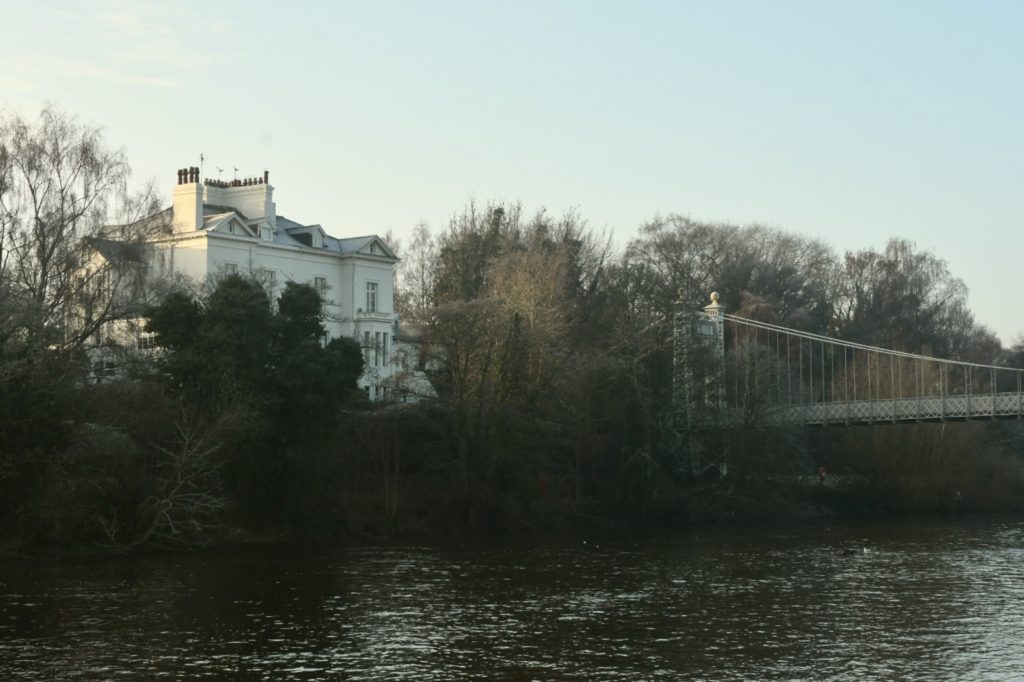
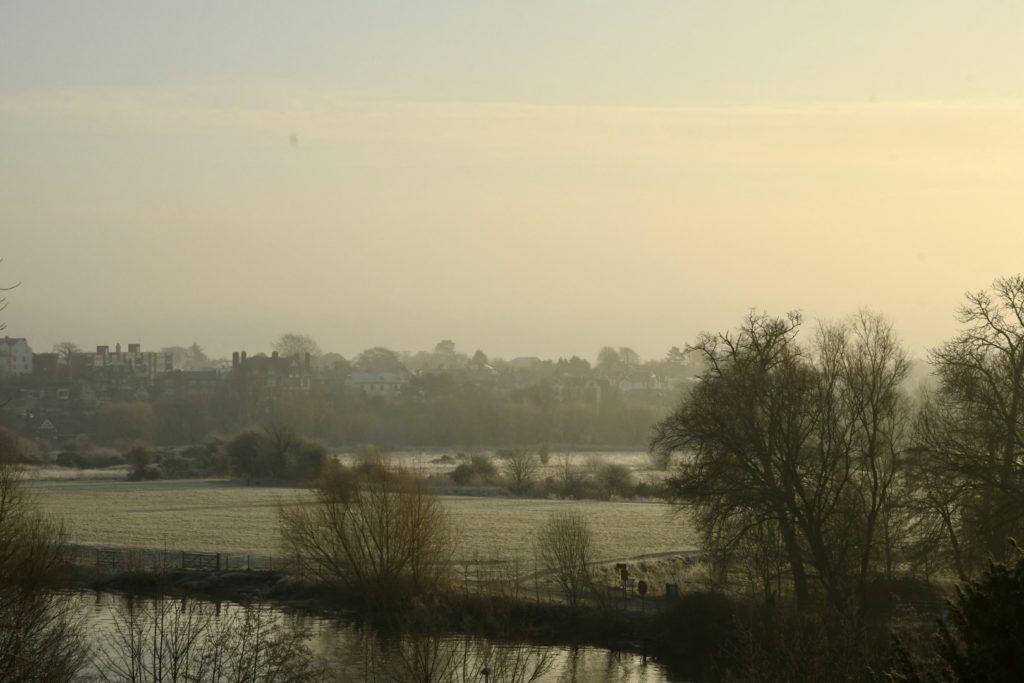
We walked through the ruins of the Roman gardens and the ancient Roman amphitheater. The amphitheater, dating back to the early first century AD, was the largest in Britain. Standing in the middle of what used to be the arena used for military training and gladiator fights, I felt a strange sense of what a swift messenger time can be. Here I was, standing on bricks from almost two thousand years ago, in an arena that was once alive with the screams and cheers of over 8,000 spectators.
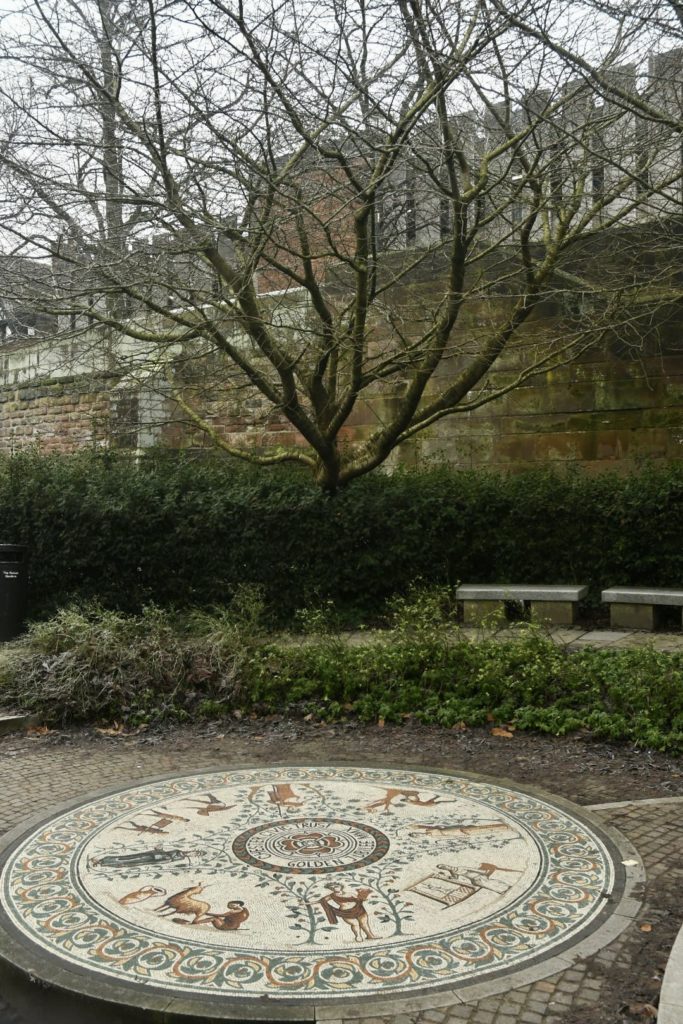

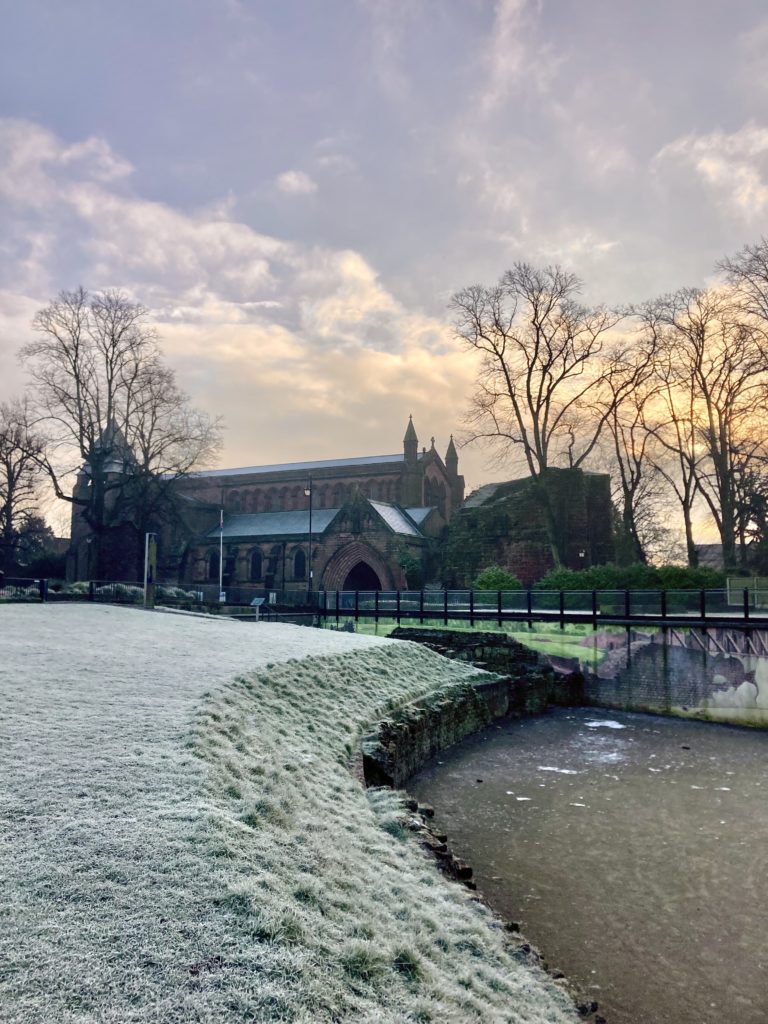
This feeling of past and future colliding persisted as we stopped to visit St. John the Baptist’s church. The friendly rector, David, told us the history of the church, which is believed to have been first built in 689 AD. Because that site is dubbed the “holiest in the city,” David has a theory that it was built on top of a pagan temple and is haunted by ghosts. Personally, I saw no sign of ghosts, but the interior of the church was beautiful.

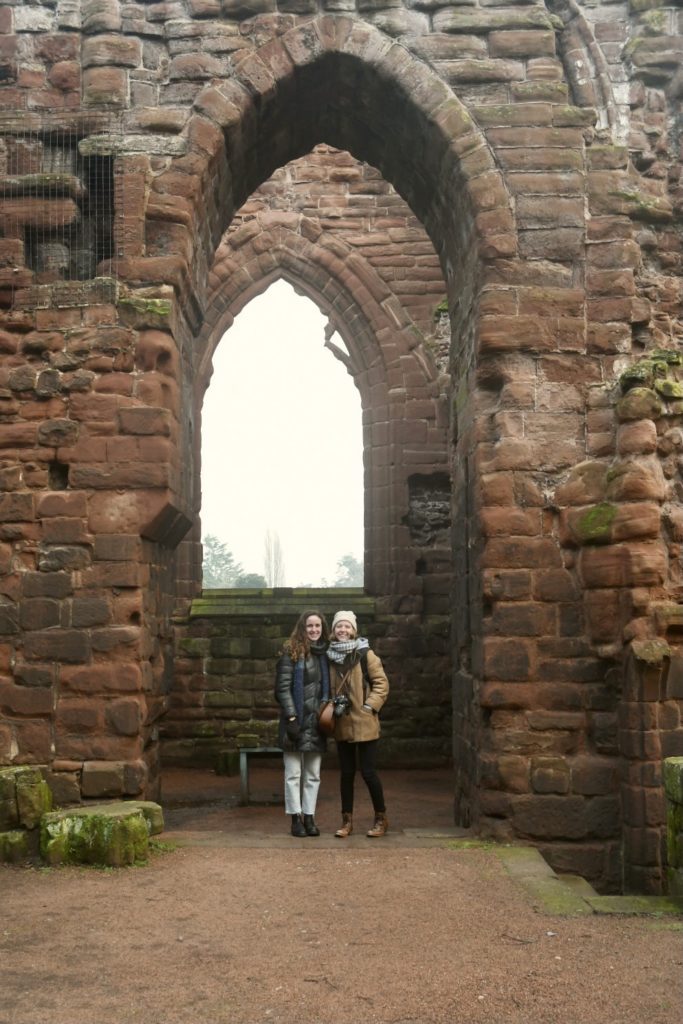
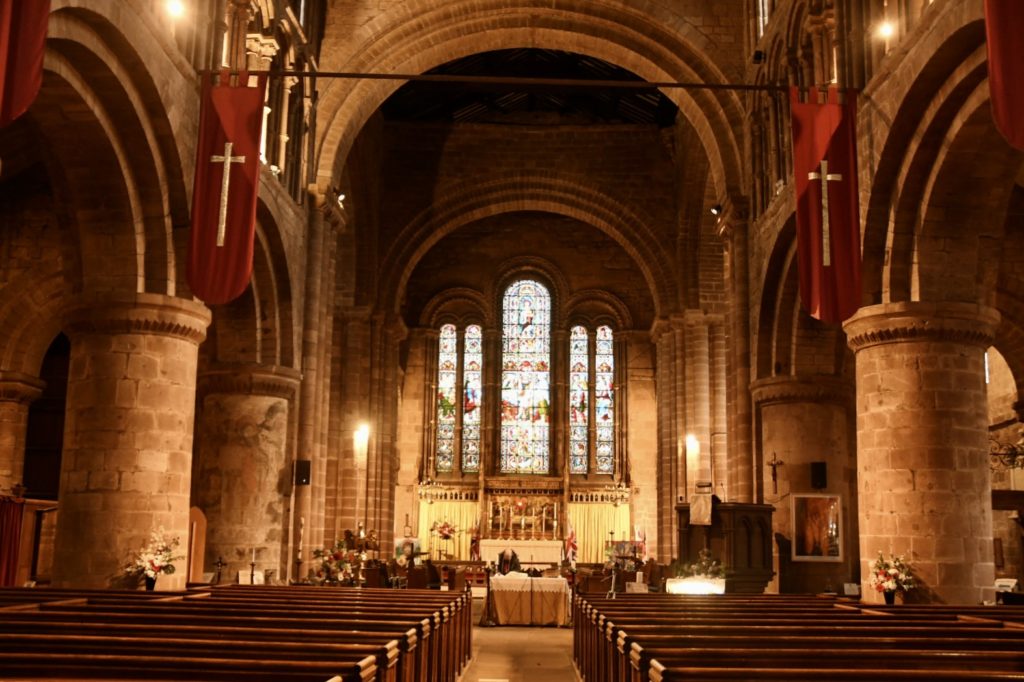
From St John’s, we walked to the Chester Cathedral. We had booked a Cathedral Tower Tour in advance and it was well worth every pence of the £9. The tour started out by climbing narrow, winding flights of stairs inside the tower. Hundreds of years earlier, monks climbed the same drafty tower barefoot and guided only by the flickering light of a candle. We stopped at several high balconies and galleries along the way to learn more about the history of the cathedral. It was originally built as a monastery in 1093 AD but became a cathedral under the threat of King Henry VIII. It took 275 years to complete but underwent various periods of renovation during the medieval and victorian times.
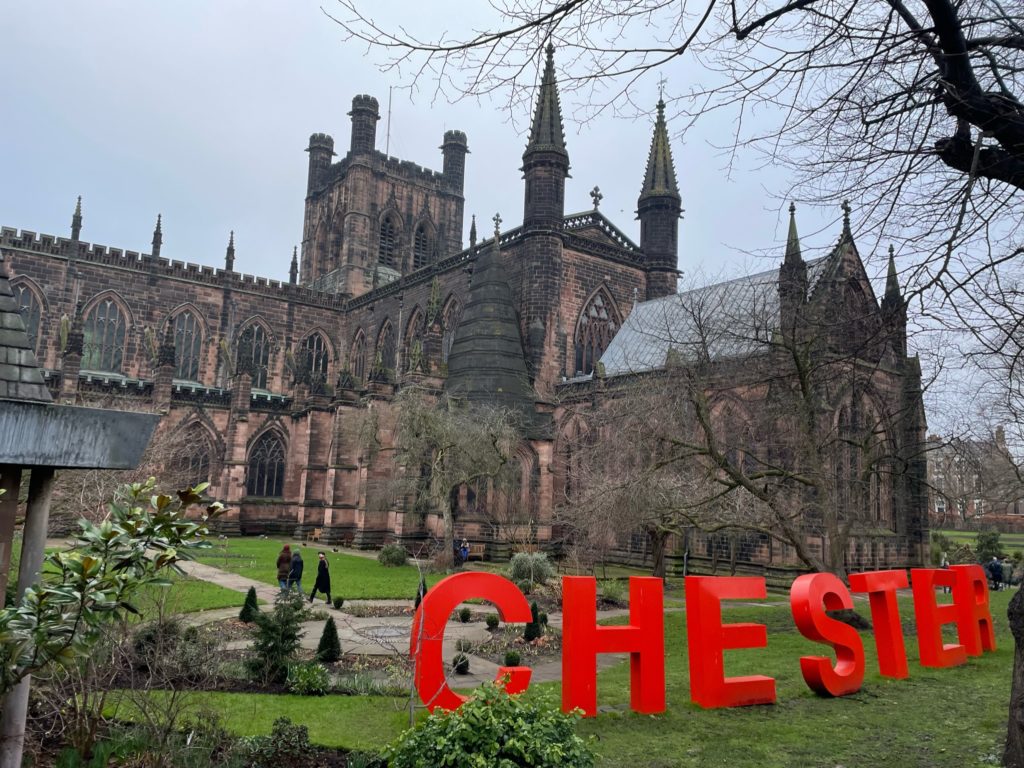
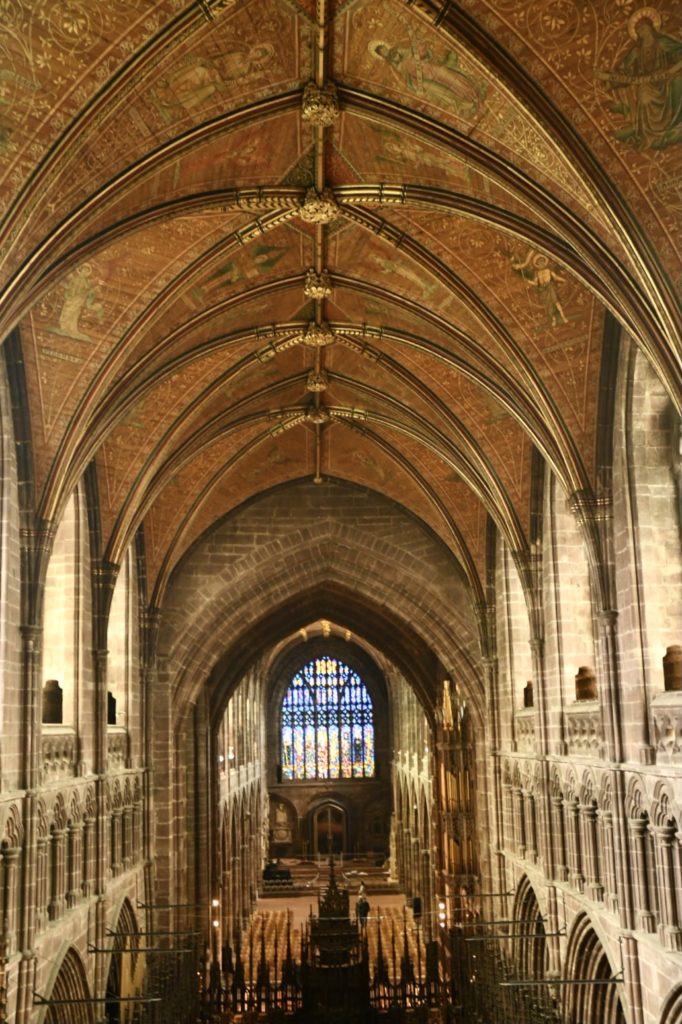

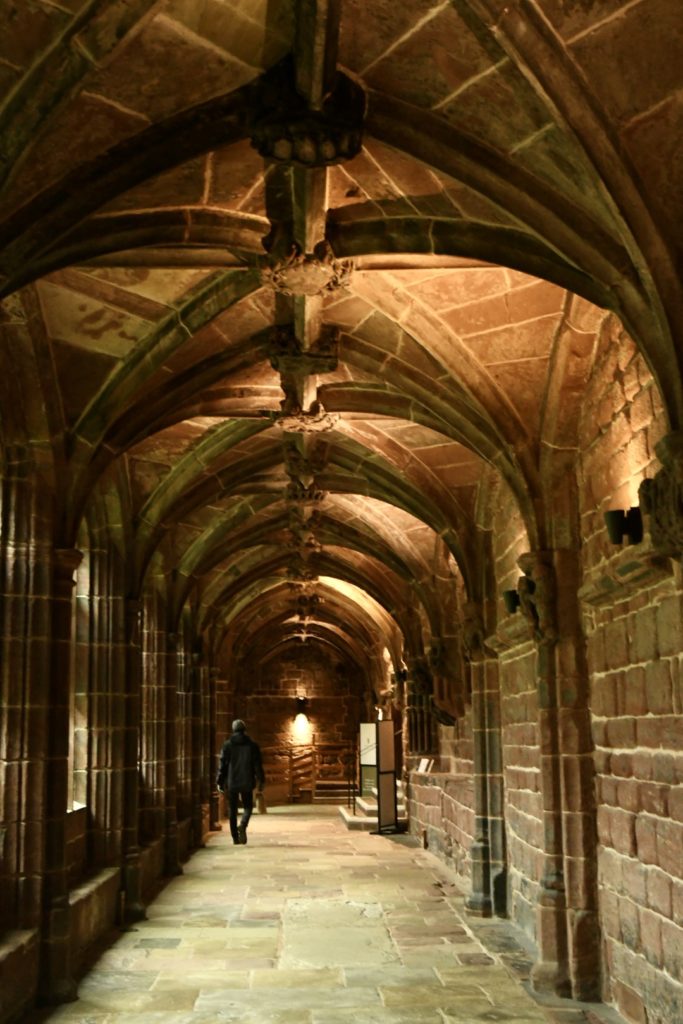
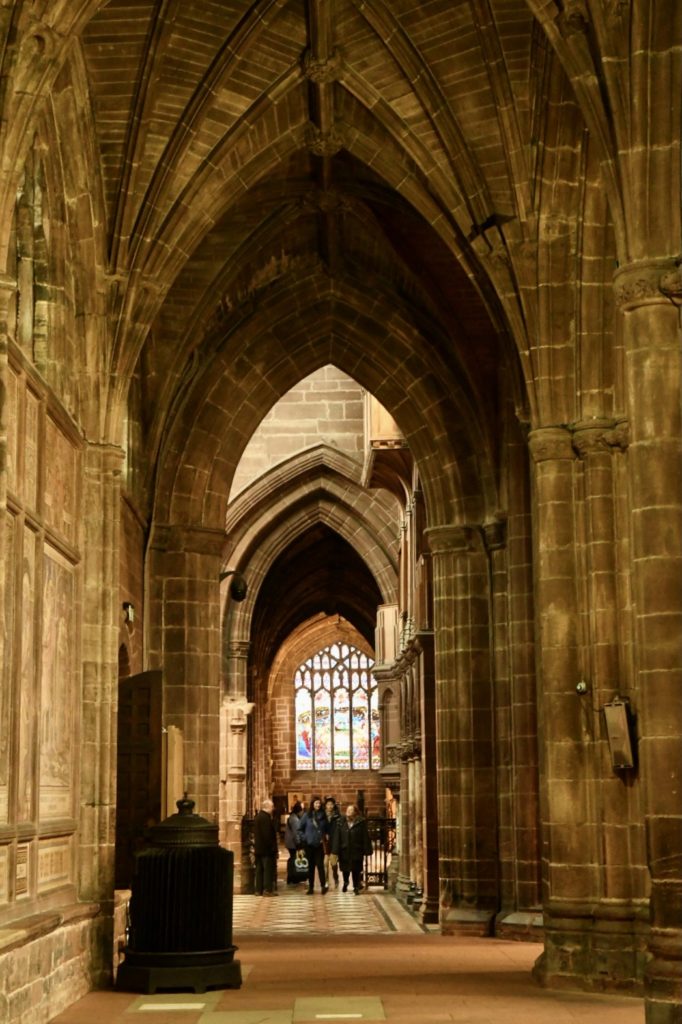

The highlight of the tour was climbing onto the roof of the tower. On a clear day, it is possible to see the mountains of North Wales! For us, the golden morning sun had given way to mist which eerily obscured the landscape.
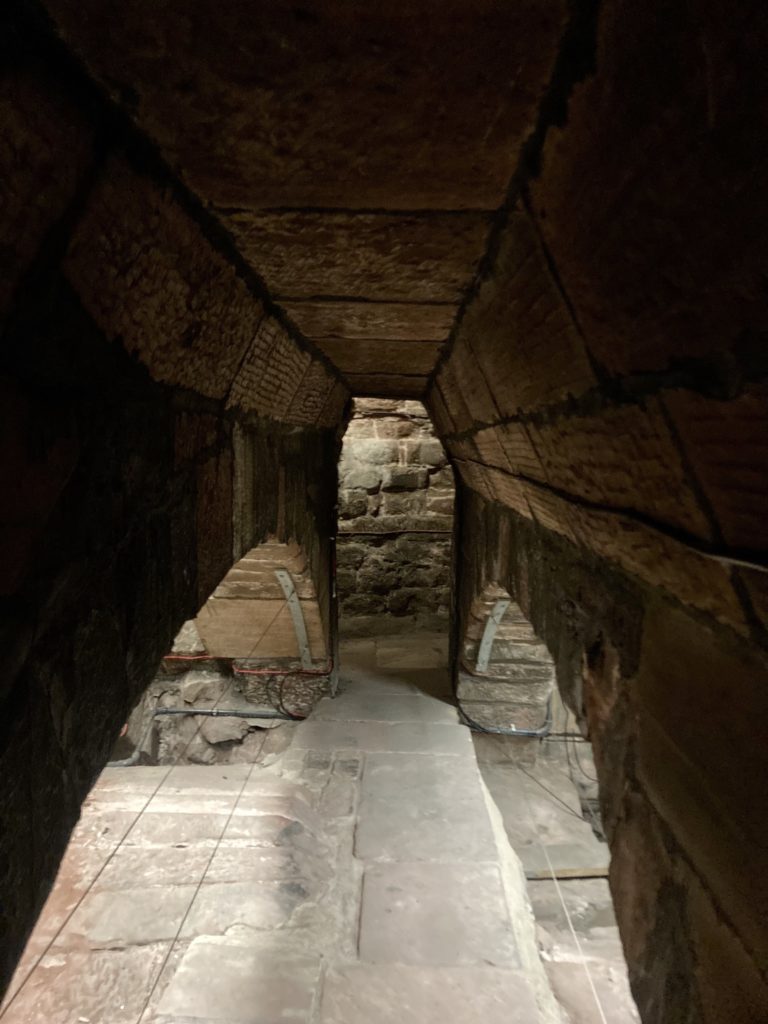
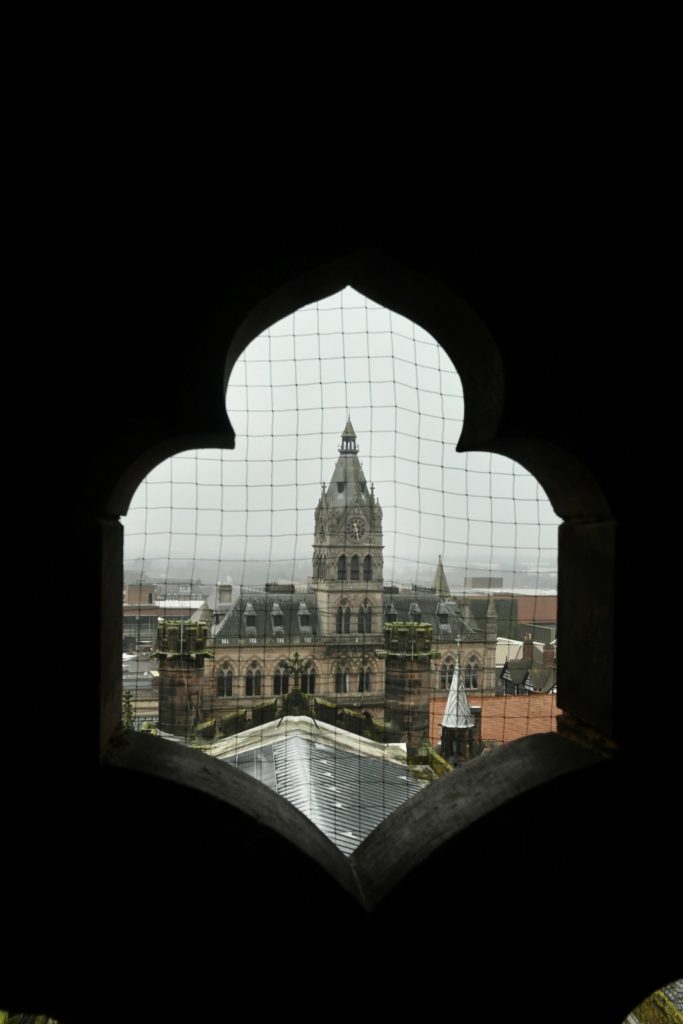
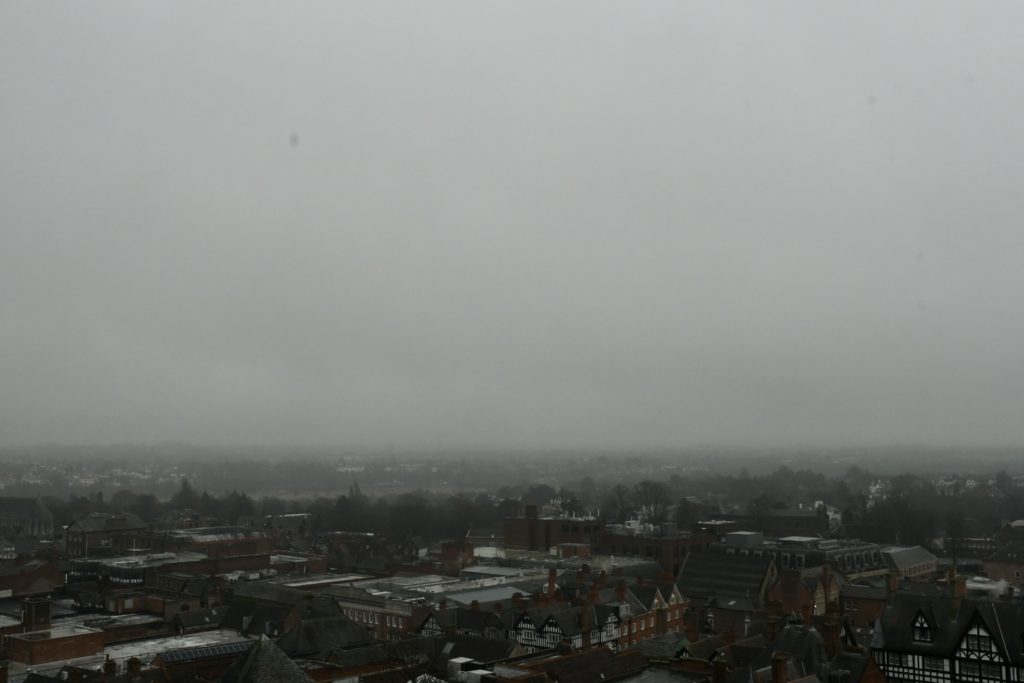
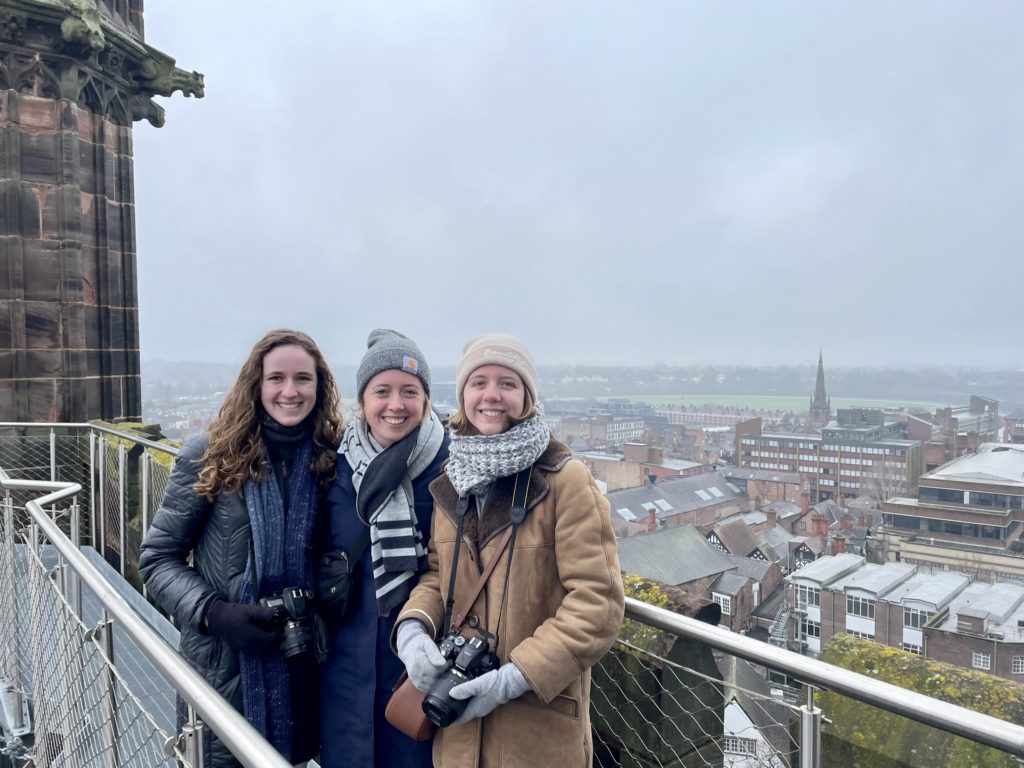
We had packed a lunch, which we enjoyed within the semi-warmth of Chester’s indoor market, knocking our feet together to unthaw. Following lunch, we walked the city walls, which are the oldest and most complete Roman walls in Britain. We admired the racetrack, the battlements, the old city gate, and tried to remember to stay on the left side of the path.
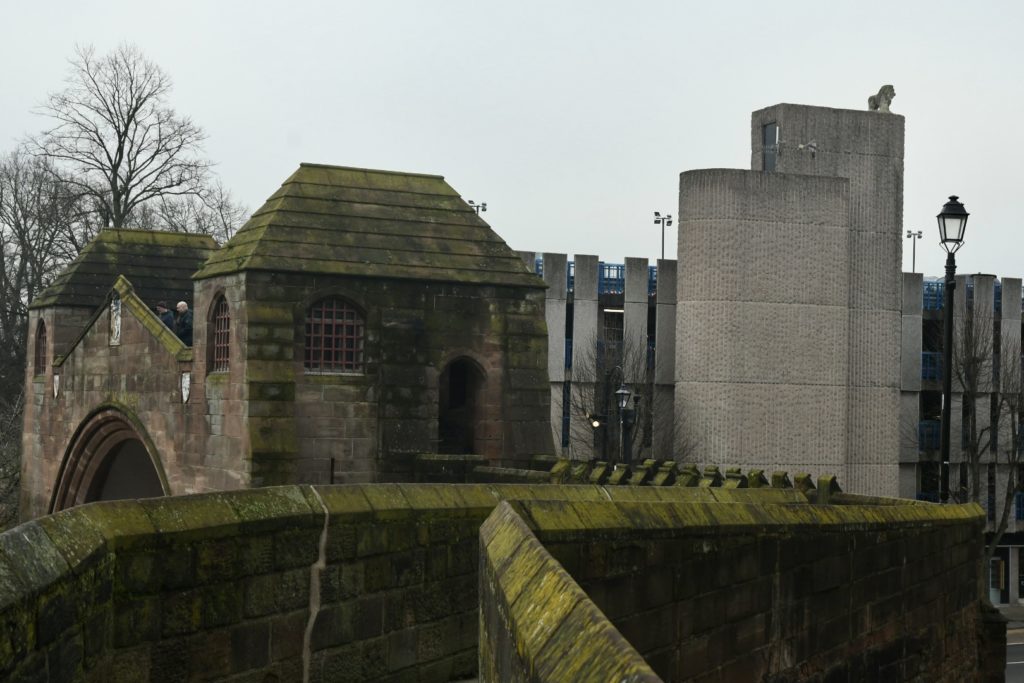
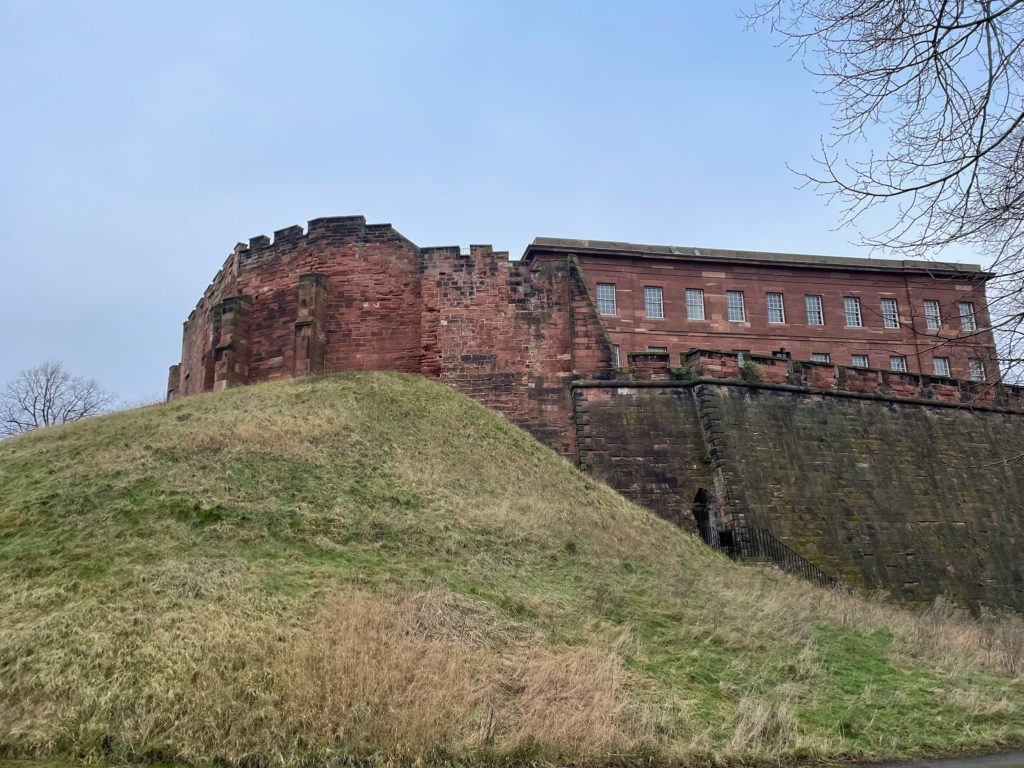
A free visit to the Grosvenor Museum provided additional information on the history of Chester and what life would have been like in an old Roman fort. Countless artifacts, models, and even several skeletons and bones discovered under and around the town have enlightened archaeologists on Chester’s history.
Following the trip to the museum, we explored the Rows, some of the shops, and stopped for a delicious coffee at Chalk Cafe per the recommendation of a friendly local.
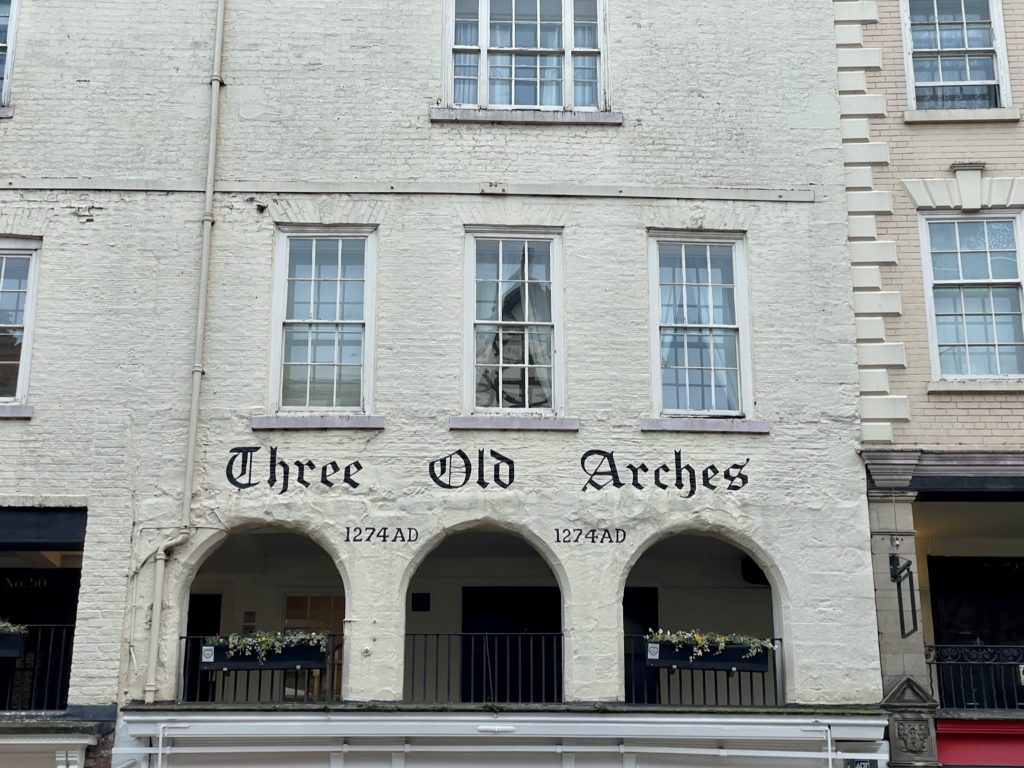

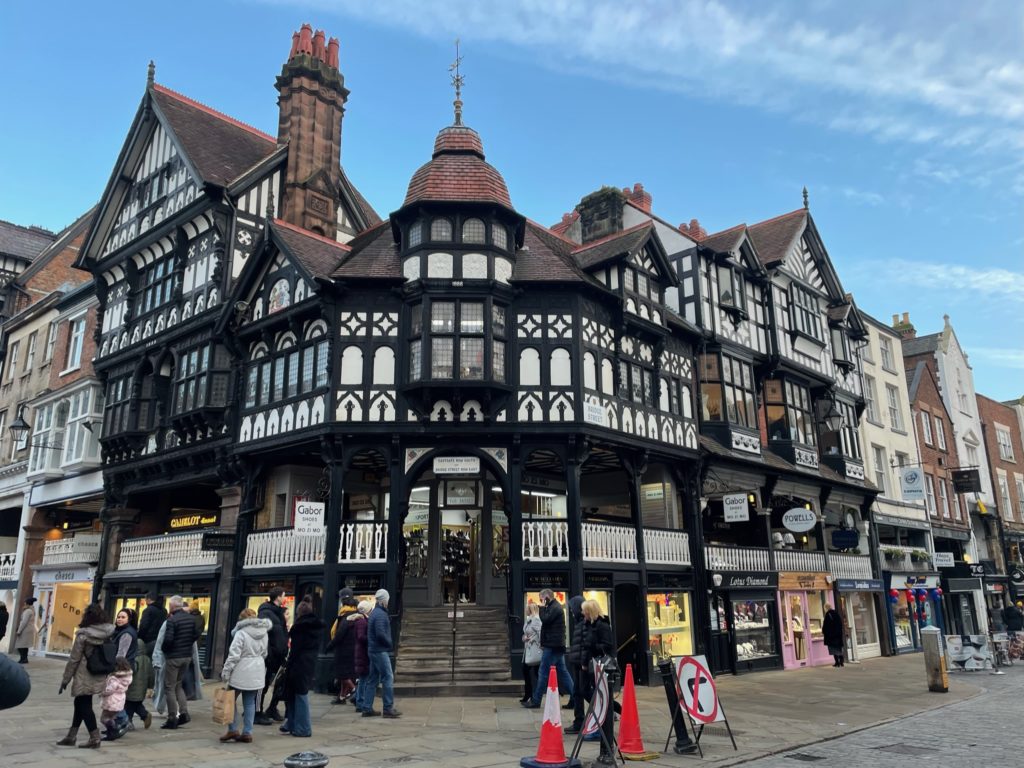
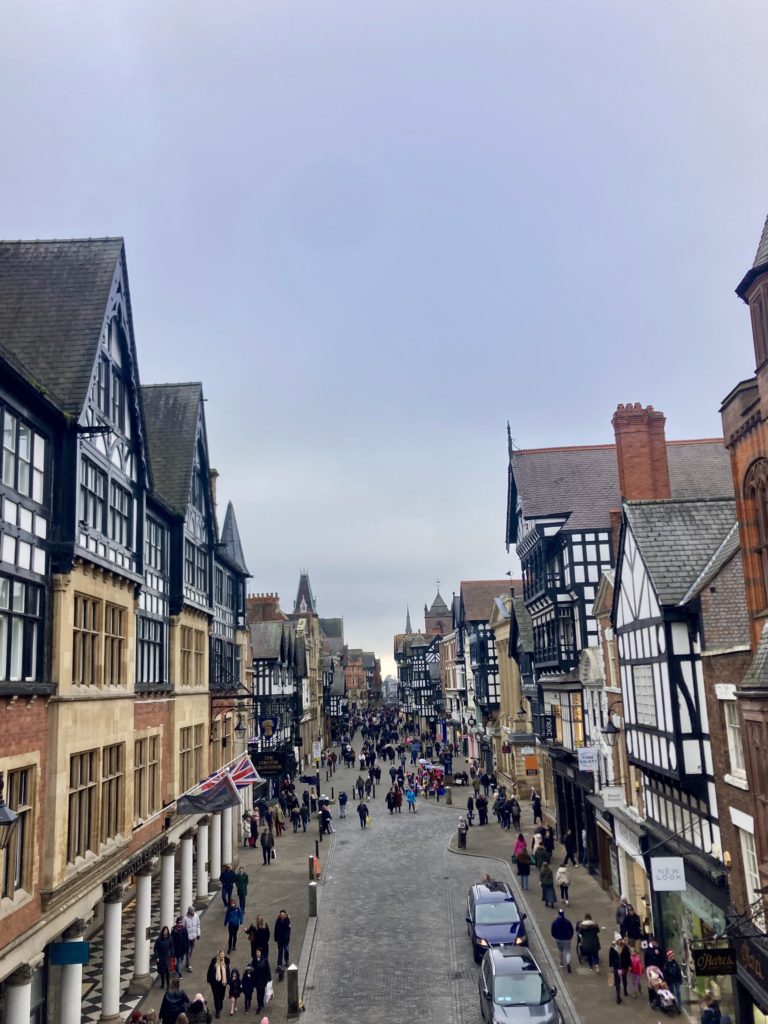
According to our phones, we’d walked almost ten miles and climbed over 20 flights of stairs, so by the time we caught the 5:15 train back to Liverpool, we were exhausted but agreed that it was a successful day!
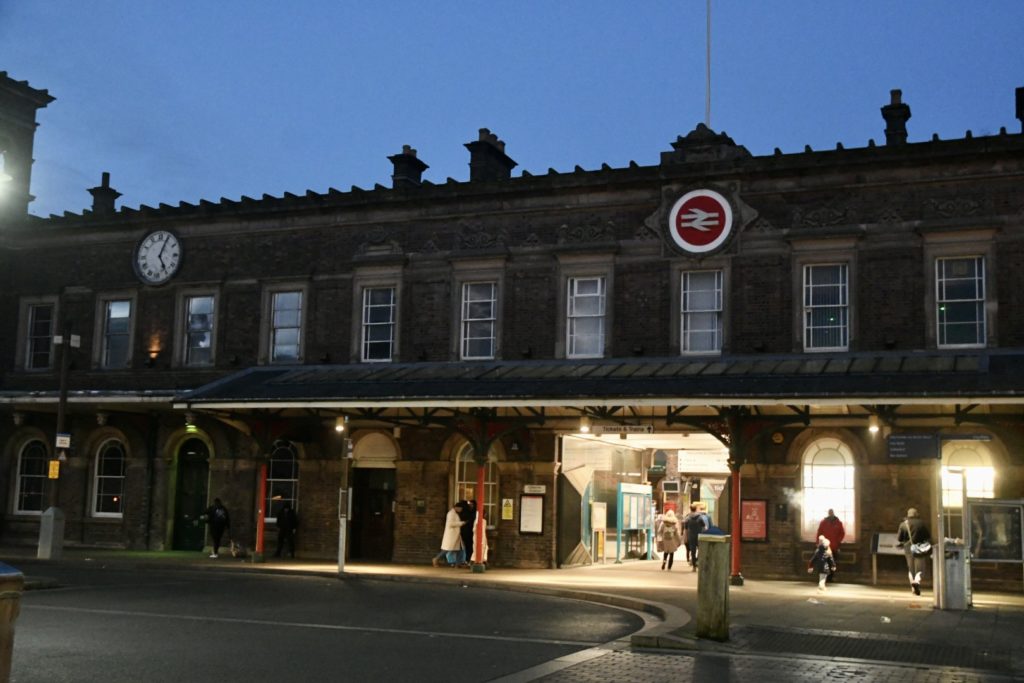
New Scouse/UK Word: “Pudding” – Rather than referring to actual pudding, Brits use this term to refer to dessert or the sweet enjoyed after a meal, which they also call “afters.”
Kodak Moment: The sunlight glimmering off the frost in Grosvenor park in Chester.
Someone new I met this week: Not a specific person, but last week, several of the guys in my political science course (Harry, Max, George, Sam, Miles…others I can’t remember) invited the international students to the pub with them after classes. For them, this is a weekly, if not daily post-class ritual. We spent several hours bantering over socialized healthcare, the political system in the US vs the UK, the drinking culture of England, feelings about the monarchy, religion, Britishness, the best accents in the UK, and the worst states in the US. It was certainly a very memorable afternoon.
Word of the week: Rhythm.


